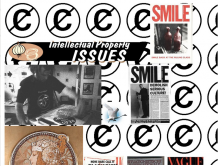READING BLOG #2 WEB WORK:A HISTORY OF INTERNET ART
- aral4009
- Nov 30, 2020
- 2 min read
Web Work by Rachel Greene provided historical context for the term net art. There are many connections that appear between the digital world, art, and communication. The text explains how net art was a result of a software glitch. The Solvenian artist Vuk Cosic discovered the term net art, which resulted in a language surrounding online art and communication. The term was rapidly spread through internet communities. This term allowed artists to communicate their ideas and share their enthusiasm. A majority of communication within the art.net communities was through email. The goal was to build a community who incorporated art into their everyday lives and activities. Much of the media being shared was influenced by political movements in Europe in the mid 90s. Communication started to fall on an international level, leading to the 90’s being characterized by “media openness and pluralistic politics.” Many times the media reflected the positivity of international collaboration. As the internet flourished artists looked towards it as somewhat of an alternative platform for alternative works and people. Net.artists were further looking to define themselves and their community. A project that peaked my interest was Desktop Is. It combines image and text to define its user. The artist, Alexei Shulgin collected screenshots of various desktops from different users. Alexei explains that the desktop acts as a user's psychoanalyst. I found it intriguing to think about how much our personal technology can expose the things in our life. Net.art was intended to share the cross over between art and everyday life. Media has now turned into somewhat of an aesthetic. The way media interacts with ideas, communication, art, and our everyday lives possesses an aesthetic that has consumed our everyday lives.












Comments